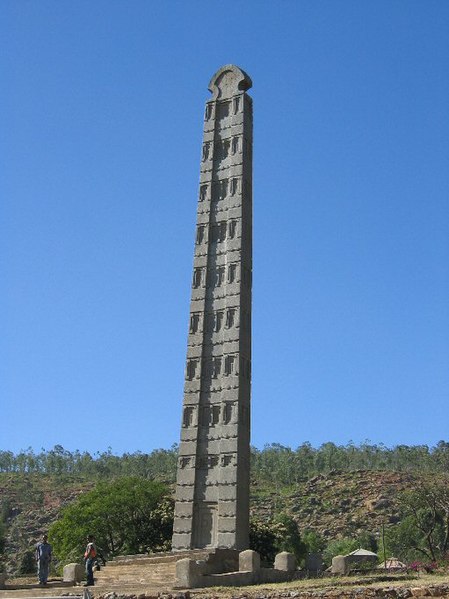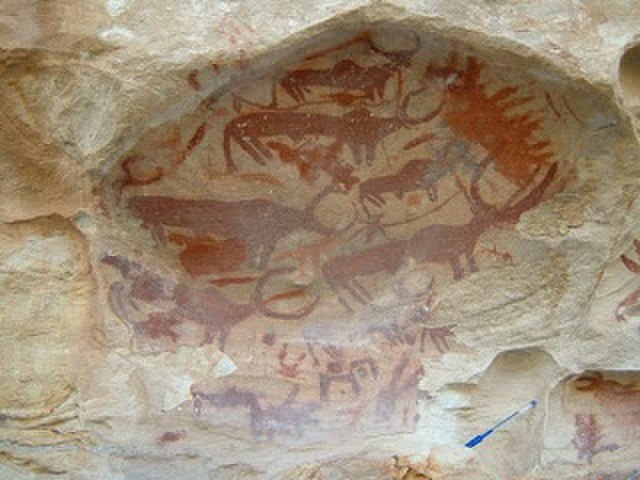Eritrea is an ancient name, associated in the past with its Greek form Erythraia, Ἐρυθραία, and its derived Latin form Erythræa. This name relates to that of the Red Sea, then called the Erythræan Sea, from the Greek for "red", ἐρυθρός, erythros. But earlier Eritrea was called Mdre Bahri. The Italians created the colony of Eritrea in the 19th century around Asmara and named it with its current name. After World War II, Eritrea annexed to Ethiopia. Following the communist Ethiopian government's defeat in 1991 by the coalition created by armed groups notably the EPLF, Eritrea declared its independence. Eritrea officially celebrated its 1st anniversary of independence on May 24,1993.
Neolithic rock art in a Qohaito canyon cave
Pre-Axumite monolithic columns in Qohaito
Bronze oil lamp excavated at Matara, dating from the Kingdom of Dʿmt (1st century BCE or earlier)
King Ezana's Stele in Axum
Eritrea, officially the State of Eritrea, is a country in the Horn of Africa region of Eastern Africa, with its capital and largest city at Asmara. It is bordered by Ethiopia in the south, Sudan in the west, and Djibouti in the southeast. The northeastern and eastern parts of Eritrea have an extensive coastline along the Red Sea. The nation has a total area of approximately 117,600 km2 (45,406 sq mi), and includes the Dahlak Archipelago and several of the Hanish Islands.
Deka Rock Art in Deka Arbaa in the Debub region of Eritrea, dated to 5,000–10,000 years ago
Bronze oil lamp excavated at Matara, dating from the Kingdom of Dʿmt (first century BC or earlier)
Pre-Axumite monolithic columns in Qohaito
Bahta Hagos was an important leader of the Eritrean resistance to foreign domination, specifically against northern Ethiopian and Italian colonialism.






